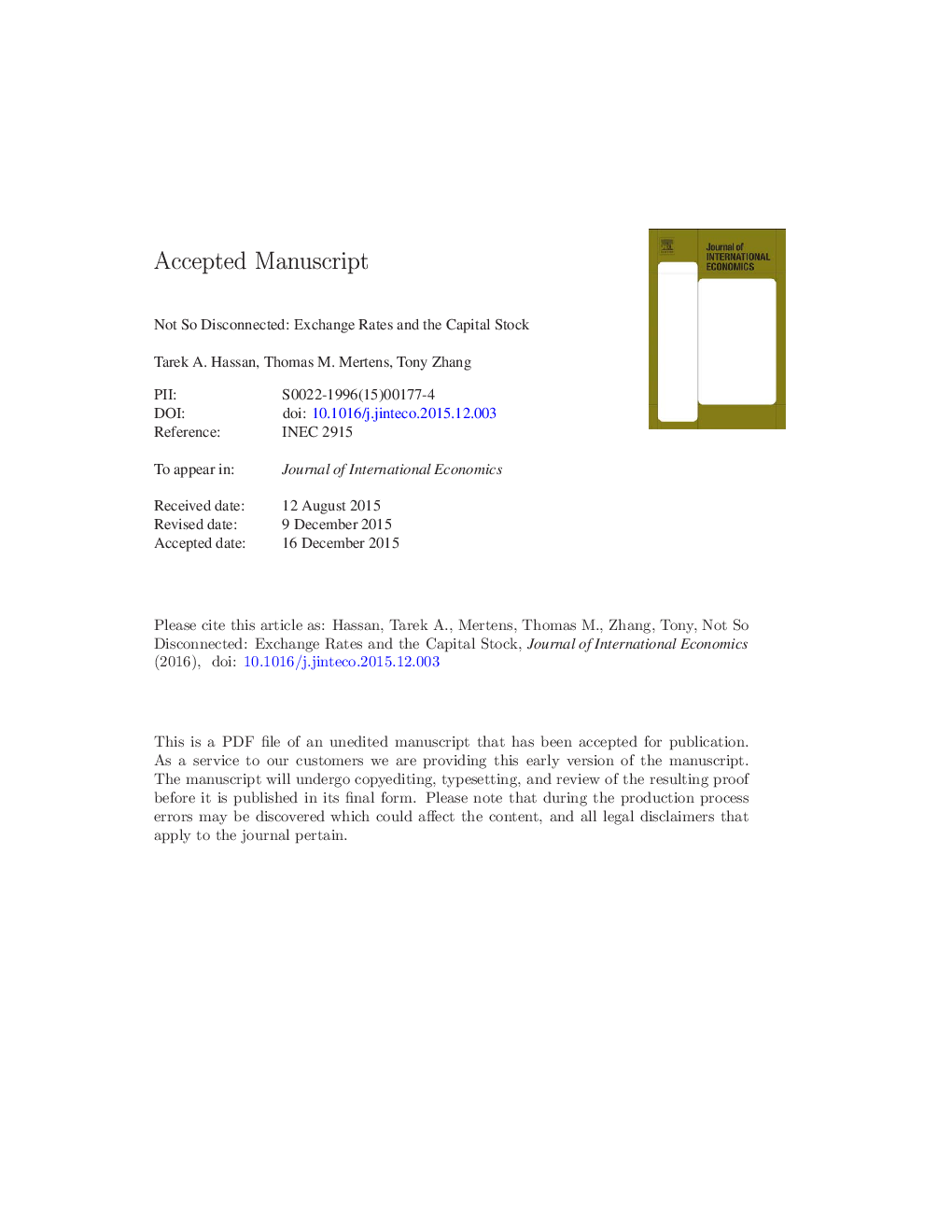| Article ID | Journal | Published Year | Pages | File Type |
|---|---|---|---|---|
| 10477330 | Journal of International Economics | 2016 | 57 Pages |
Abstract
We investigate the link between stochastic properties of exchange rates and differences in capital-output ratios across industrialized countries. To this end, we endogenize capital accumulation within a standard model of exchange rate determination with nontraded goods. The model predicts that currencies of countries that are more “systemic” for the world economy (countries that face particularly volatile shocks or account for a large share of world GDP) appreciate when the price of traded goods in world markets is high. These currencies are better hedges against consumption risk faced by international investors because they appreciate in “bad” states of the world. As a consequence, more systemic countries face a lower cost of capital and accumulate more capital per worker. We estimate our model using data from seven industrialized countries with freely floating exchange rate regimes between 1984 and 2010 and show that cross-country variation in the stochastic properties of exchange rates accounts for 72% of the cross-country variation in capital-output ratios. In this sense, the stochastic properties of exchange rates map to fundamentals in the way predicted by the model.
Related Topics
Social Sciences and Humanities
Economics, Econometrics and Finance
Economics and Econometrics
Authors
Tarek A. Hassan, Thomas M. Mertens, Tony Zhang,
